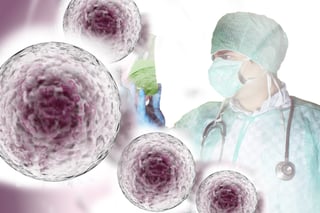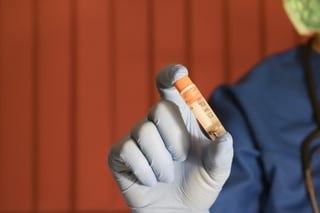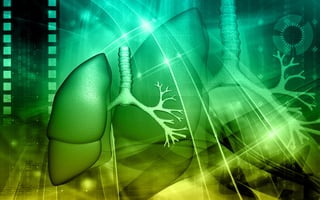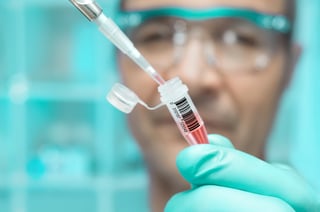
Chronic obstructive pulmonary disease (COPD) is a progressive lung disease that makes it difficult to breathe. The term COPD comprises several diseases the two most prevalent being emphysema and chronic bronchitis. Most people diagnosed with COPD have a combination of both. One of the most common symptoms of COPD is a chronic cough and excess mucus production. This chronic cough can lead to tightness of the chest, wheezing, and shortness of breath.
Currently there is no cure for COPD. It is a progressive disease that can have a significant impact on quality of life. Researchers have been trying to find a cure for years to help the millions of patients that suffer from this disease.
This treatment uses stem cells to regenerate damaged cells to help battle your COPD. It was only recently discovered that stem cells are present in adult lungs, so stem cell treatment is in its infancy stage. At this time trial results are promising if inconclusive, but researchers are learning more and more every day.
What are Cells?
Your body is made up of over 200 different cell types. Each cell type has its own size,  function and structure. All these cells put together make your body perform the different tasks that are required to sustain life.
function and structure. All these cells put together make your body perform the different tasks that are required to sustain life.
For example, skin cells are compact and small and protect the outside of your body from harm, while nerve cells have long, branch-like fibers called axons that conduct electrical currents between your brain and your peripheral nervous system.
Cells group together to form tissue and tissue is used to form your organs. Each and every cell has its own job and they work together to ensure that the organs in your body perform and work properly. All human cells, no matter the size, have these things in common:
- Each has a nucleus that contains DNA. Cells will read the DNA and carryout different instructions. Your DNA determines nearly everything about your body, from the color of your hair to your blood type and even what diseases you are at risk for.
- Cytoplasm is the liquid outside of the nucleus. The cytoplasm contains the necessary components that make the materials that the cells need to do their jobs.
- The cell membrane is considered the surface of your cells. The cell membrane receives signals from other cells and lets material in and out of the cells. It is vital that cells communicate to be able to work together so your tissues and organs work the way they are supposed to.
- New cells are produced by dividing. The DNA is replicated before it divides and each new cell has the same nucleus, cytoplasm, and cell membrane.
Stem Cells: What are They?
Inside you, there are many different types of stem cells that are formed at different times of your life. These stem cells get their name from the fact that they are the foundation for or stem from which every organ and tissue in your body has formed. These include embryonic stem cells that exist in our early development and various adult stem cells that appear when we are developing as a fetus and remain inside our bodies through our lifetime.
How Stem Cells are Different
- First, stem cells can self-renew or make copies of themselves.

- Second, stem cells can develop into more specialized cells depending on what is needed at a given time.
- Stem cells may be obtained from 4 to 5-day old human embryos, however, some stem cells also exist in various structures of an adult, including the brain, skin, or blood.
- These cells are usually dormant in your body until triggered by an illness or injury.
- These stem cells can create tissue for other organs so they can be used to heal or even regenerate damaged tissue.
- Stem cells can be extracted from your body and re-implanted in an area that needs help to heal itself.
You may have heard about stem cell trials for people with neurological illnesses or spinal cord injuries, but there are other illnesses that stem cells may be useful for treating.
Types of Stem Cells
Embryonic - As their name suggests they are derived from humans in the embryo stage which form three to five days after egg fertilization. In normal development these cells will evolve into more specialized cells that grow into specific organs or tissues. Scientists remove the inner cell mass and grow the cells in laboratory conditions so that they retain embryonic properties.
Tissue Specific- These cells are adult, or somatic stem cells. They posses the ability to generate cell types for the specific organ or tissue which they are a part of. These stem cells are extremely challenging to locate in the human body. Studying these specialized stem cells has provided science with a great deal of knowledge about aging and disease development.
Mesenchymal- These stem cells exist in the connective tissue that surrounds tissue and organs, also known as the stroma. The discovery of these type of stem cells is relatively recent and their healing capability, if any, is not fully understood. These cells do seem to possess specific characteristics depending where they come from and how they grow.
Induced Pluripotent- These cells have been laboratory engineered by transforming tissue specific cells into cells with embryonic properties. These cells help researchers learn about disease onset and progression. They are quite often used for developing new treatments and drugs.
Stem Cells Used for COPD Treatment
Many different types of cells are being considered for treatment with each trial trying to develop more effective treatments. Generally speaking they are adult stem cells extracted from the patient themselves. These cells are being engineered in the ways described above in an attempt to get healthy lung tissue cells to reproduce and grow.
What Treated Cells Do
Due to the recent discovery of stem cells in the lungs, clinical trials are currently being conducted for treatment of your COPD. Researchers believe stem cell treatments are promising and will help patients in new and effective ways. Currently the treatments are only in the clinical trial phase. Stem cell treatment for COPD has the potential to help patients in these ways:

- Building new healthy lung tissue which can replace and damaged tissue in the lungs.
- Stimulating current and forming new capillaries in the lungs which may lead to improved lung function.
- Reducing inflammation in the airways, which will help with oxygen and carbon dioxide gas exchange.
- Stem cell therapy for your COPD is envisioned to generate new and healthy lungs.
- In the years to come, it is hopeful patients will not have to go through lung transplants and stem cell treatment could pave the way for a cure for COPD.
Stem Cell Treatments and What They Entail
To perform a stem cell transplant, the stem cells must first be harvested from the patient’s own blood or bone marrow, or from a matched donor. The stem cells are separated and returned to the patient intravenously. Once the cells are returned to the patient, they can begin to promote healing.
When something, such as medication, blood, or stem cells, is introduced to your body through an IV, it goes directly to the right side of the heart. Within a heartbeat or two, it is pushed straight to the lungs. Then your blood distributes the item throughout the body.
However, this process changes a little when it comes to stem cells. During studies conducted for the National Institutes of Health (NIH), researchers found that stem cells go through this process but get trapped when they arrive in the lungs. This is commonly called the pulmonary trap, and although it may not be good news for someone who wishes to see those cells move throughout the body, it’s a happy occurrence for those looking to slow down the progression of a chronic lung disease.
Words of Caution
While we don't want to discourage you from being open to trying new treatments or being optimistic about developments, we do want you to be cautious.
- Before trying ANY kind of new treatments speak to your physician or respiratory
 therapist. No exceptions to this rule.
therapist. No exceptions to this rule. - For profit experimental treatment centers are not the same as a clinical trial. Before participating in a clinical trial please research the trial and facility thoroughly. Any legitimate trial should feature these key characteristics.
- There has been data collected prior to the trial that leads researchers to believe that treatment being tested is likely to be effective.
- A regulatory agency has reviewed the trial. In the US the Food and Drug Administration is responsible for this. These are the trials currently being monitored by the FDA. These results were gained using the key words COPD and Stem Cell. Search for other keywords or just a broad condition will likely bring a greater number of results.
- The study should be focused on answering a specific questions such as how damaged lung cells respond to certain stem cell treatments versus something broad like improving COPD symptom flareups.
- Do not subject yourselves to any treatments that have not successfully passed through clinical trials.
- Be sure to understand what complications may arise with this or any other treatment, how to combat them, or if the risk is worth it.
- Just because cells harvested are your own doesn't mean there are not risks involved. Understand the risks of infection, what symptoms to look for, and how to lower risks.
- Know that some treatments take time to work or require more than one administration. Ask for details about this before you begin.
- Client testimonials are not proof. While you'll likely want to speak to others who have undergone any procedures that you might be considering, weigh those personal experiences with documented scientific data. That's not to say that these people are necessarily dishonest, only that their results are their own and may not be what you can expect. They may have different health history than you, their disease may be less advanced, or any number of variables may be in play.
- It's important to check with regulatory agencies in your area to ensure that any clinic you are considering using has been licensed.
- The FDA has placed stem cell therapy in an exemption category. This means that the FDA hasn't deemed it dangerous when practiced within certain guidelines but it hasn't given it's stamp of approval as a guaranteed cure either.
- As this procedure is still in the trial phase the cost, which is sometimes expensive, is not covered by insurance.
Conclusion
Stem cell transplant for the treatment of lung disease is a groundbreaking medical treatment currently in the clinical trials phase. This treatment has the potential to heal damaged lung tissue and cure COPD in the future. There are still many unknowns about this process. However, with new technology and research being constantly developed, it is conceivable that one day your COPD won’t just be treated, it could be cured.



